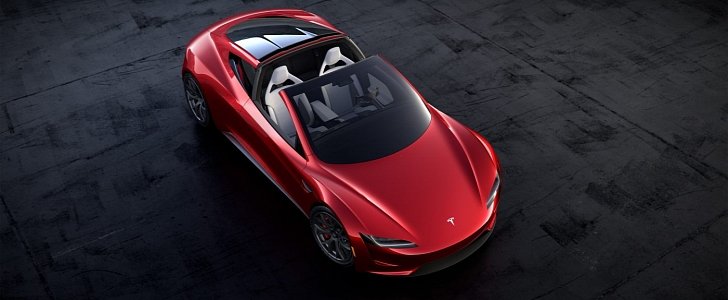When Elon Musk got on that stage on November 16 and started blurting out all those unbelievable numbers about the Semi and next-gen Roadster, everybody was in too much of a shock to react. We were too busy dropping our jaws to stop for a minute and think what they actually meant.
Now that nearly three weeks have passed, the dust has settled and it's time for a more rational analysis of the CEO's claims. Because, based on what we know so far, most of them are improbable, while some are outright impossible.
Just to know exactly what we're talking about, here's a quick rundown: the Semi has a maximum weight of 80,000 pounds, goes for 500 miles on one charge, and reaches 60 miles per hour in five seconds flat. It can also replenish 400-miles worth of battery power in just 30 minutes.
All experts agree that, based on current technology, the Semi would need a battery pack with a capacity of anything between 800 and 1,000 kWh. That wouldn't just make it incredibly heavy, but also very, very expensive. We would be willing to accept it if the Semi cost $500,000, but Tesla announced a price of $180,000 for the long-range version.
And then there's the charging rate. 400 miles of range with 500 miles maximum range means 80% of the total battery capacity. If we accept its size is 800 or 1,000 kWh, that leads to astronomical charging rates that are impossible to imagine given the current technology. Something has to give.
Things are a little easier to digest when it comes to the Roadster. The 200 kWh battery pack seems to explain both its 620 miles (1,000 km) range and its 1.9-second 0-60 acceleration time, with the only two questions remaining being how Tesla will fit such a large battery into a small sports car with a 2+2 seating configuration and how quickly will it be able to recharge.
Nobody seems to doubt Tesla's claims - they might not come when Elon Musk says they would, but they will eventually. However, the real substrate here is what this battery and charging technology - promised for 2020 max - means for all of Tesla's products.
If the company can give the Roadster, its halo car, a 200 kWh battery with a price of $200,000, why wouldn't it fit a similar one into a $130,000 Model S? After all, people are paying this money on the EV right now and it has half the range and weaker performance?
Tesla can't strictly be relying on the drop in battery cost and some battery breakthrough that hasn't happened yet. 2019, the year the Semi is scheduled to start production, isn't that far away, so there must be something else it's not telling us. Whatever it is, it has the potential of being really, really big.
Just to know exactly what we're talking about, here's a quick rundown: the Semi has a maximum weight of 80,000 pounds, goes for 500 miles on one charge, and reaches 60 miles per hour in five seconds flat. It can also replenish 400-miles worth of battery power in just 30 minutes.
All experts agree that, based on current technology, the Semi would need a battery pack with a capacity of anything between 800 and 1,000 kWh. That wouldn't just make it incredibly heavy, but also very, very expensive. We would be willing to accept it if the Semi cost $500,000, but Tesla announced a price of $180,000 for the long-range version.
And then there's the charging rate. 400 miles of range with 500 miles maximum range means 80% of the total battery capacity. If we accept its size is 800 or 1,000 kWh, that leads to astronomical charging rates that are impossible to imagine given the current technology. Something has to give.
Things are a little easier to digest when it comes to the Roadster. The 200 kWh battery pack seems to explain both its 620 miles (1,000 km) range and its 1.9-second 0-60 acceleration time, with the only two questions remaining being how Tesla will fit such a large battery into a small sports car with a 2+2 seating configuration and how quickly will it be able to recharge.
Nobody seems to doubt Tesla's claims - they might not come when Elon Musk says they would, but they will eventually. However, the real substrate here is what this battery and charging technology - promised for 2020 max - means for all of Tesla's products.
If the company can give the Roadster, its halo car, a 200 kWh battery with a price of $200,000, why wouldn't it fit a similar one into a $130,000 Model S? After all, people are paying this money on the EV right now and it has half the range and weaker performance?
Tesla can't strictly be relying on the drop in battery cost and some battery breakthrough that hasn't happened yet. 2019, the year the Semi is scheduled to start production, isn't that far away, so there must be something else it's not telling us. Whatever it is, it has the potential of being really, really big.

